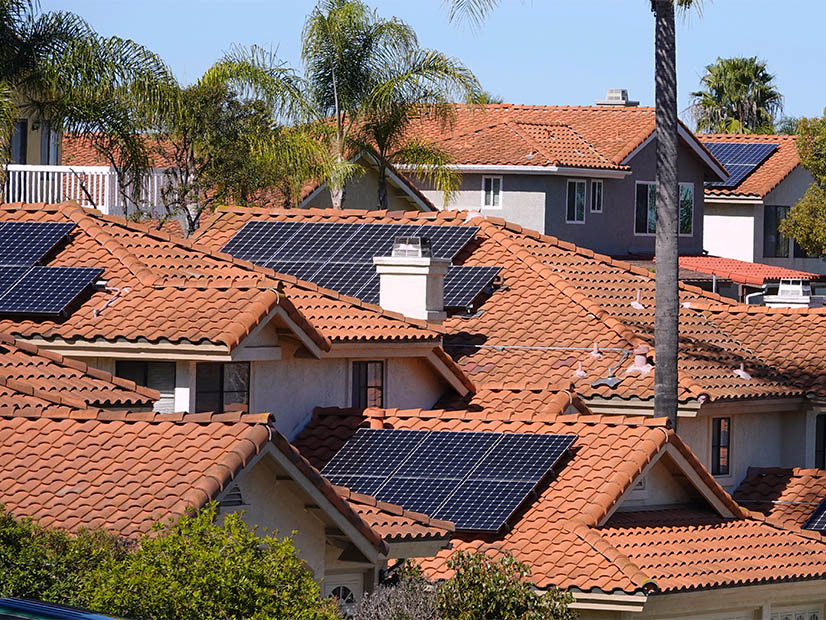Installed small-scale solar capacity increased by an estimated 6.4 GW in 2022 — a record amount, even amid supply chain constraints and rising costs.
The Energy Information Administration highlighted the data Monday and said small-scale solar nationwide totaled 39.5 GW by the end of 2022 — about a third of U.S. installed solar capacity.
EIA defines small-scale or distributed solar as systems with up to 1 MW nameplate capacity. But most small-scale solar is much smaller than 1 MW — rooftop residential installations account for most small-scale capacity.
When EIA began its annual estimates of the subsector in 2014, it placed the installed capacity at just 7.3 GW. Since then, falling solar panel costs, government incentives, policy changes and rising retail electric costs have helped accelerate the buildout.
California, with its abundant sunshine and statutory requirement that new residential buildings be equipped with solar panels, accounted for 36% of installed capacity nationwide, by far the most of any state.
But Hawaii, which has historically relied on expensive imported fuel to power its electric generation, has by far the greatest market penetration: 541 watts of installed solar capacity per capita. California is second, at 364 watts.
Other top states for installed small-scale solar capacity include New York, New Jersey and Massachusetts. None of the three have optimal amounts of sunshine, but all have strong and long-standing policies that encourage installation.
New York is No. 2 in the nation, at 2.6 GW, and New Jersey is third, at 2.4 GW.
Sun Belt states Texas (2.2 GW) and Arizona (2.1 GW) are catching up, however, and have surpassed Massachusetts (2.0 GW).
Sunny Florida is close behind, at 1.9 GW. Every other state is estimated to have 1 GW or less of small-scale solar generation installed on homes, businesses and industrial sites.



